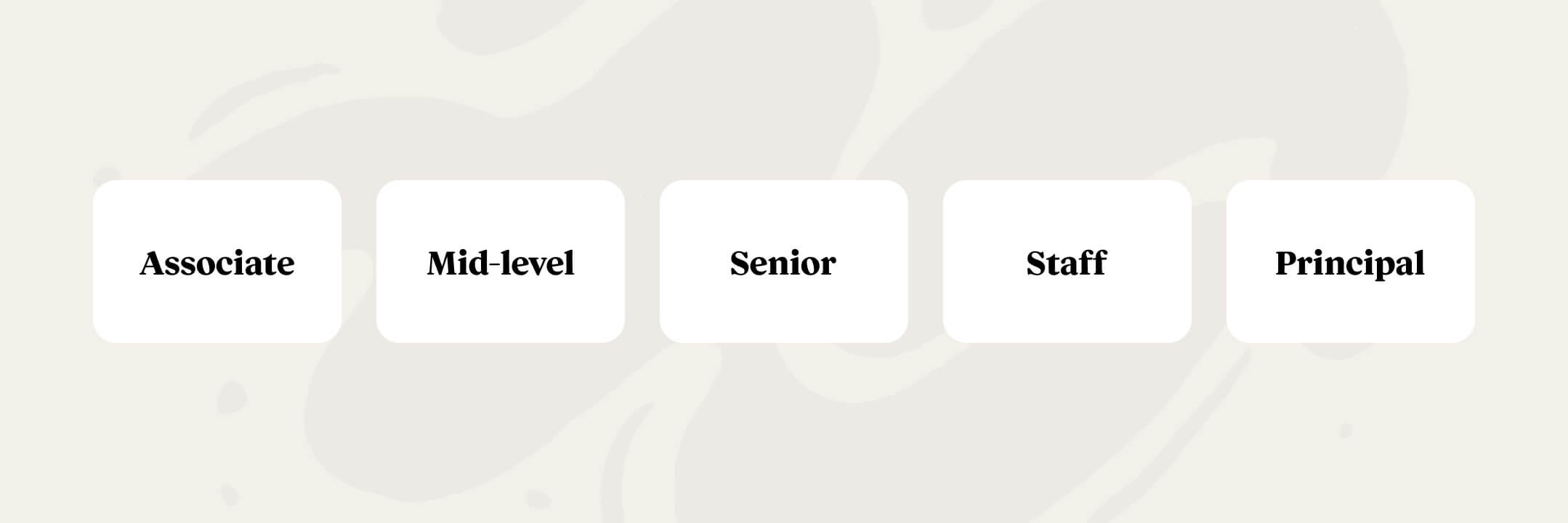Many designers become managers for the wrong reasons. Often, they’re incentivized by their companies to become managers to gain greater impact, influence, and compensation.
If you’re a senior designer it may seem like the obvious next step. Certainly that was my own experience a couple of years ago when I decided to dip my toes into management.
But I quickly learned that people management is a vastly different job than being a designer. My day was filled with back-to-back meetings discussing org design, hiring, and people issues. Instead of designing the product, I found myself writing performance reviews.
“If you have a lot of experience and love what you do, you shouldn’t have to drop it and do something entirely different just to grow in your career”
Helping other people grow and establishing a strong culture is highly rewarding and satisfying work, but doing that full-time is not for everyone. If you have a lot of experience and love what you do, you shouldn’t have to drop it and do something entirely different just to grow in your career.
Parallel career paths
So how can you become a design leader without going into management? The solution requires companies to institute two parallel career growth paths — one that focuses on people management and another that focuses on leadership as an individual contributor, often titled as staff or principal designers.
More and more companies are adopting these parallel paths, but they’re relatively new and it can be difficult to define what’s actually expected of these design leaders. As we began to redefine our own levels here at Intercom, I met with principal designers from various companies and read interviews with individual contributor design leaders on Staff.design. I saw that there’s a lot of variance in what they’re responsible for and what’s expected of them. In many cases they were left to define their own job descriptions – we wanted to offer more clarity around what the roles involve and reduce ambiguity.
There’s no right or wrong answer for what an individual contributor design leader should do, but to help you get started, we’re publishing our updated job levels for product designers and design managers. We’re sharing them under a Creative Commons license so that you can adopt them, change them, and re-share them.

What do individual contributor design leaders do at Intercom?
Each designer level has influence and responsibility across a number of core areas – scope, ownership, expertise, strategy and vision, autonomy, and leadership – and the specific expectations expand as you go up the design levels. Here are the key differences between senior, staff, and principal designers. If you want to read the full list of expectations you can do that here.
Scope
- Senior designers work within a single cross-functional product team.
- Staff designers primarily also work within a cross-functional product team, but they’re starting to grow their influence onto adjacent teams in their group.
- Principal designers primarily work at the group level, pairing with the other cross-functional group leaders to help all of their teams to be successful.
Ownership
- Senior designers create design solutions that drive customer satisfaction and strategic outcomes.
- In addition to that, when necessary staff designers lead design work across multiple teams.
- Principal designers also autonomously identify new problems and opportunities, and drive impactful solutions to them. They also improve our design processes and tools.
Expertise
- Senior designers are expert full-stack designers. They have a deep understanding of their product area and customers. They’re comfortable in solving complex problems.
- Additionally, staff designers are highly efficient and excellent at balancing effort vs reward. They design connected, modular systems that help us move faster in the future and resolve complex design debt.
- Principal designers have deep context of the entire product and competition, and they design and rationalize our most foundational systems.
Strategy and vision
- Senior designers are actively involved in roadmapping and strategy conversations for their team.
- Beyond that, staff designers contribute to the group strategy and its product vision.
- Principal designers actively contribute to the group product strategy and drive its product vision.
Autonomy
- Senior designers are mostly autonomous, needing little guidance from their managers.
- In addition, staff designers act as force multipliers for their team and designers in adjacent teams. They help others deliver better work.
- Principal designers are expected to act as force multipliers for the entire group. They help all teams in their group deliver better work.
Leadership
- Senior designers co-lead their team with their product manager and engineering manager.
- Staff designers actively give feedback and mentor designers in their group, without managing them.
- Principal designers also co-lead their group together with the other group leads, ensuring that all teams are healthy and delivering great work.
Do work that you love
Work is such a big part of our lives. At Intercom, we want everyone to do the work that they love while still being continuously challenged, growing in their careers, and broadening their impact. We hope that by sharing our levels we can help more companies adopt these roles and ultimately help designers choose their career tracks for the right reasons.
Do you have any more questions about the staff or principal designer role? Message us on Twitter at @intercomdesign and we’ll be happy to share more about our experience.
We’re actively growing our design team across all levels. If you’re interested in learning more about what it’s like to work at Intercom and want to see our open roles, check out Intercom.design.
